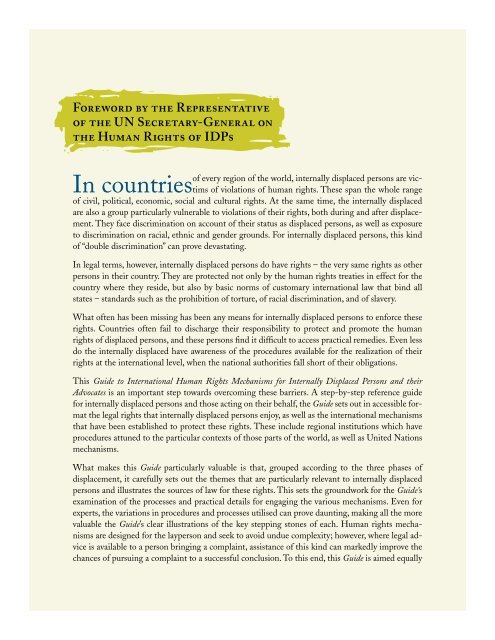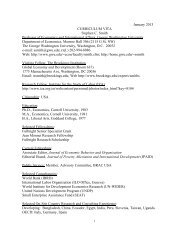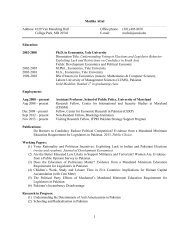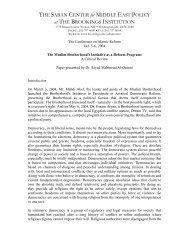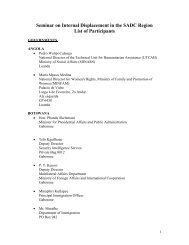Guide to International Human Rights Mechanisms - Brookings
Guide to International Human Rights Mechanisms - Brookings
Guide to International Human Rights Mechanisms - Brookings
You also want an ePaper? Increase the reach of your titles
YUMPU automatically turns print PDFs into web optimized ePapers that Google loves.
Foreword by the Representative<br />
of the UN Secretary-General on<br />
the <strong>Human</strong> <strong>Rights</strong> of IDPs<br />
of every region of the world, internally displaced persons are vic-<br />
In countries tims of violations of human rights. These span the whole range<br />
of civil, political, economic, social and cultural rights. At the same time, the internally displaced<br />
are also a group particularly vulnerable <strong>to</strong> violations of their rights, both during and after displacement.<br />
They face discrimination on account of their status as displaced persons, as well as exposure<br />
<strong>to</strong> discrimination on racial, ethnic and gender grounds. For internally displaced persons, this kind<br />
of “double discrimination” can prove devastating.<br />
In legal terms, however, internally displaced persons do have rights – the very same rights as other<br />
persons in their country. They are protected not only by the human rights treaties in effect for the<br />
country where they reside, but also by basic norms of cus<strong>to</strong>mary international law that bind all<br />
states – standards such as the prohibition of <strong>to</strong>rture, of racial discrimination, and of slavery.<br />
What often has been missing has been any means for internally displaced persons <strong>to</strong> enforce these<br />
rights. Countries often fail <strong>to</strong> discharge their responsibility <strong>to</strong> protect and promote the human<br />
rights of displaced persons, and these persons find it difficult <strong>to</strong> access practical remedies. Even less<br />
do the internally displaced have awareness of the procedures available for the realization of their<br />
rights at the international level, when the national authorities fall short of their obligations.<br />
This <strong>Guide</strong> <strong>to</strong> <strong>International</strong> <strong>Human</strong> <strong>Rights</strong> <strong>Mechanisms</strong> for Internally Displaced Persons and their<br />
Advocates is an important step <strong>to</strong>wards overcoming these barriers. A step-by-step reference guide<br />
for internally displaced persons and those acting on their behalf, the <strong>Guide</strong> sets out in accessible format<br />
the legal rights that internally displaced persons enjoy, as well as the international mechanisms<br />
that have been established <strong>to</strong> protect these rights. These include regional institutions which have<br />
procedures attuned <strong>to</strong> the particular contexts of those parts of the world, as well as United Nations<br />
mechanisms.<br />
What makes this <strong>Guide</strong> particularly valuable is that, grouped according <strong>to</strong> the three phases of<br />
displacement, it carefully sets out the themes that are particularly relevant <strong>to</strong> internally displaced<br />
persons and illustrates the sources of law for these rights. This sets the groundwork for the <strong>Guide</strong>’s<br />
examination of the processes and practical details for engaging the various mechanisms. Even for<br />
experts, the variations in procedures and processes utilised can prove daunting, making all the more<br />
valuable the <strong>Guide</strong>’s clear illustrations of the key stepping s<strong>to</strong>nes of each. <strong>Human</strong> rights mechanisms<br />
are designed for the layperson and seek <strong>to</strong> avoid undue complexity; however, where legal advice<br />
is available <strong>to</strong> a person bringing a complaint, assistance of this kind can markedly improve the<br />
chances of pursuing a complaint <strong>to</strong> a successful conclusion. To this end, this <strong>Guide</strong> is aimed equally


